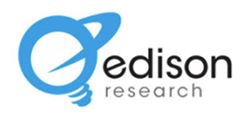WWO: Podcast Audience Media Age Rises 10 Years
Cumulus Media | Westwood One’s Audio Active Group blog reveals data from Edison Research’s ongoing Share of Ear study, specifically data from the third quarter of 2025. Among the key takeaways from the study are: 1) AM/FM radio dominates ad-supported audio with a 64% share, followed by podcasts at 20%; 2) Marketers and media agencies significantly overestimate audience shares to Pandora/Spotify and massively underestimate AM/FM radio audiences; and 3) Interestingly, as older demographics flock to podcasts, the median age of the podcast audience ages sharply from 29 in 2017 to 39. The study notes that “in 2017, podcasts’ daily reach was greatest among 18-24s. Eight years later, podcasts’ daily reach has surged, especially in older demographics. The older the age group, the greater the growth in the podcast daily audience. Today, podcasts’ greatest reach centers on 25-44s, with significant growth among 45-64s.” See the full blog post here.
2) Marketers and media agencies significantly overestimate audience shares to Pandora/Spotify and massively underestimate AM/FM radio audiences; and 3) Interestingly, as older demographics flock to podcasts, the median age of the podcast audience ages sharply from 29 in 2017 to 39. The study notes that “in 2017, podcasts’ daily reach was greatest among 18-24s. Eight years later, podcasts’ daily reach has surged, especially in older demographics. The older the age group, the greater the growth in the podcast daily audience. Today, podcasts’ greatest reach centers on 25-44s, with significant growth among 45-64s.” See the full blog post here.



 reach. “Republicans listen to more AM/FM radio than other groups, with an index of 109 (or 9% more listening than average). The ad-supported spoken-word channels on SiriusXM are a particularly efficient place to find Republicans, with an index of 146. Meanwhile, podcasts stand out as the more efficient platform for reaching Democrats, indexing at 121. And what about those elusive Independents, who often tip an election? Both streaming music, and in particular music videos on YouTube, over-deliver for these potential voters, with indexes of 103 and 123 respectively.” Edison adds, “Regardless of the party that buyers are trying to reach with political ads, audio stands out as a superior pathway to reaching voters. Audio provides enormous audiences and often a far less cluttered political environment than other ad channels.”
reach. “Republicans listen to more AM/FM radio than other groups, with an index of 109 (or 9% more listening than average). The ad-supported spoken-word channels on SiriusXM are a particularly efficient place to find Republicans, with an index of 146. Meanwhile, podcasts stand out as the more efficient platform for reaching Democrats, indexing at 121. And what about those elusive Independents, who often tip an election? Both streaming music, and in particular music videos on YouTube, over-deliver for these potential voters, with indexes of 103 and 123 respectively.” Edison adds, “Regardless of the party that buyers are trying to reach with political ads, audio stands out as a superior pathway to reaching voters. Audio provides enormous audiences and often a far less cluttered political environment than other ad channels.” those living in suburban or urban areas. Rural listeners spend 43% of their daily audio listening time with AM/FM radio and radio streams, compared with urban listeners who spend 34% of their time with AM/FM radio and radio streams. Meanwhile, Urban listeners spend over twice as much of their daily audio time with podcasts as rural listeners. Urban listeners spend 13% of their daily audio time with podcasts compared with rural listeners who spend 6% of their daily time with podcasts.” Interestingly, if you combine the AM/FM listening and podcast listening numbers for Urban, Suburban and Rural listeners, these numbers are essentially the same – between 47% and 49%. Edison notes, “It appears that the ‘time budget’ for radio and podcasting combined is consistent across locations; it is just the apportionment of that time that varies.”
those living in suburban or urban areas. Rural listeners spend 43% of their daily audio listening time with AM/FM radio and radio streams, compared with urban listeners who spend 34% of their time with AM/FM radio and radio streams. Meanwhile, Urban listeners spend over twice as much of their daily audio time with podcasts as rural listeners. Urban listeners spend 13% of their daily audio time with podcasts compared with rural listeners who spend 6% of their daily time with podcasts.” Interestingly, if you combine the AM/FM listening and podcast listening numbers for Urban, Suburban and Rural listeners, these numbers are essentially the same – between 47% and 49%. Edison notes, “It appears that the ‘time budget’ for radio and podcasting combined is consistent across locations; it is just the apportionment of that time that varies.”